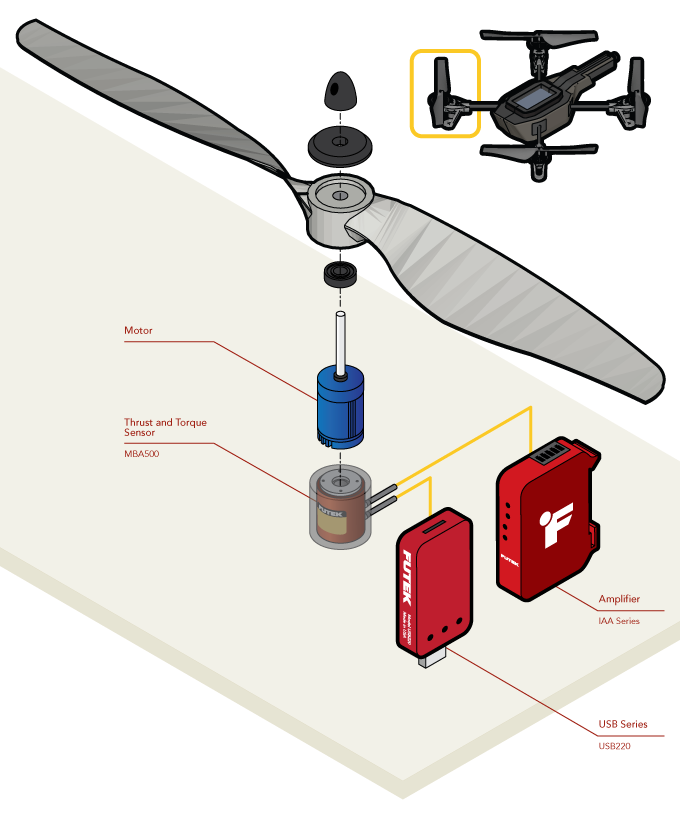This application note on Drone Propeller Testing has been kindly provided by our valued supplier FUTEK. For more information, please contact us.
Application Note using: FUTEK’s MBA500 Torque and Thrust Biaxial Sensor!
Professional and hobbyist level quadcopters and drones are becoming more popular in the marketplace. Therefore, Drone Propeller Testing has become a necessity for manufacturers. A quadcopter by definition uses its four propellers to generate air lift and change directions.
The propellers work in conjunction with each other to ensure that there are no torque imbalances to send the vehicle spinning out of control.
Firstly, by fixing the MBA500 Torque and Thrust Bi-Axial Load Cell to the motor’s end. We can characterise the thrust and torque generated by each motor and propeller. Secondly, the rotating motor and the thrust of the propellers will be measured by the MBA500’s Fz channel. The back-torque of the motor measured by the Mz channel, all while maintaining low crosstalk.
This multi-axial sensor, when used with a USB220, allows for a portable setup where a hobbyist/test engineer can use a laptop to analyse the live test data both in an outdoor setting or in a more controlled, indoor environment.
The MBA500 Torque and Thrust Bi-Axial Load Cell is designed to measure reaction torque moments. As well as tension and compression loads, all in one transducer. Temperature compensated and constructed of all aluminium. This torque/thrust sensor is able to achieve an impressive 0.2% nonlinearity and yet provide 150% (22.7 to 68 kg) 125% (90.7 kg) over-capacity. Therefore, two separate outputs for applied torque and thrust forces.
Therefore, Force/Torque sensors are used for drone propeller testing, product testing, robotic assembly, grinding and polishing.
